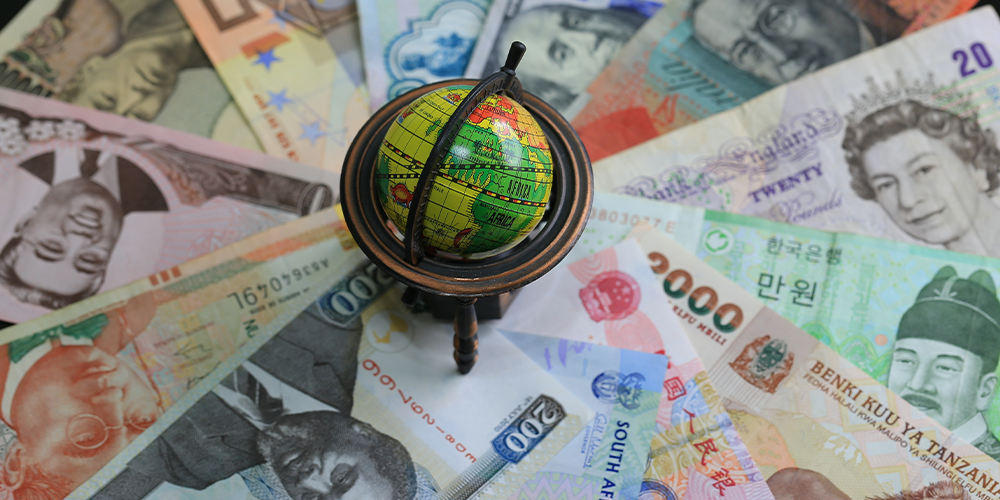
World’s largest economies in 2024, ranked by GDP
The global economic growth is likely to continue at the same pace (3.2 percent in 2023) in both 2024 and 2025. Meanwhile, global headline inflation is likely to fall from an annual average of 6.8 percent in 2023 to 5.9 percent in 2024 and to 4.5 percent in 2025, according to the IMF/World Economic Outlook April 2024.
The report said risks to the outlook are balanced but are more tilted to the downside in the near-term. On the downside, new price spikes from geopolitical tensions, along with persistent core inflation could raise interest rate expectations and reduce asset prices.
Largest economies in the world in 2024
Let’s take a look at the largest economies in the world as per GDP, according to the IMF as of July 1, 2024.
United States of America (GDP: $28,783 billion)
The United States of America (U.S.) continues to be the largest economy in the world and the richest nation, maintaining its dominant position from 1960 onwards. Major industries such as manufacturing, services, finance and technology drive the economy of United States. This marks an impressive diversification. The U.S. has a sizable consumer market and it encourages innovation and entrepreneurship. It has a strong infrastructure, and offers favourable business environment. Also, the U.S. dollar’s dominant position as the world’s reserve currency contributes to its economic influence.
China (GDP: $18,536 billion)
China’s economy is growing faster as seen by its rise from the fourth position in 1960 to the second position in 2023. The three main pillars of the Chinese economy are manufacturing, exports and investment. It posesses a large staff, strong support from the government, modern infrastructure, and a rapidly growing consumer base.
Germany (GDP: $4,590 billion)
Germany is popular in the field of engineering, automotive, chemical and pharmaceutical industries. Exports is the main driver of Germany’s economy. It benefits from having a skilled workforce, strong R&D programmes, and a strong commitment to innovation promotion.
Japan (GDP: $4,112 billion)
Japan is the fourth-largest, one of the most developed and most technologically sophisticated economies in the world. It is a leader in high-tech sectors including robotics, electronics and automobiles with a heavy emphasis on innovation and technology. It also has a large manufacturing base. Japan keeps driving economic growth despite an ageing labour force by investing heavily in R&D and maintaining a highly developed infrastructure.
India (GDP: $3,942 billion)
India ranks fifth in the world in 2024 in terms of GDP. Industries such as manufacturing, services, information technology and agriculture drive the country’s economic growth. Its economy is diverse and expanding quickly. The country makes use of its sizable home market, a young, tech-savvy work population, and a growing middle class.
United Kingdom (GDP: $3,502 billion)
The U.K. is a highly developed country with a robust service industry. The country’s financial and business services are heavweights in terms of economic contrbution. London is a major international centre for insurance and finance.
France (GDP: $3,132 billion)
Manufacturing, tourism and agriculture are important industries in France. Luxury products and aerospace also play important roles. France is also well-known for its social security system and high standard of living. The nation’s strong economy and influence over the world are a result of its extensive R&D spending and well-developed infrastructure.
Brazil (GDP: $2,333 billion)
Brazil is a major force in the world economy. The country’s several industries, which include mining, manufacturing, oil and gas extraction, and agriculture, are the foundation of its robust economy. Brazil’s economy has grown as a result of its large local market and efforts to draw in international investment.
Italy (GDP: $2,332 billion)
A strong manufacturing sector drives Italy’s economic growth. It focuses on the automotive, fashion and design industries. Its GDP is likely to reach $2.33 trillion in 2024. Another important factor in Italy’s robust economy is tourism. Despite the constraints posed by a substantial national debt, Italy’s skilled labour force and rich cultural legacy continue to be invaluable resources. Italy is the third-biggest economy in the EU. The country has a highly robust market. It is renowned for both its agricultural and commercial sectors. These sectors are influential and innovative.
Canada (GDP: $2,242 billion)
Oil, gas, minerals and lumber are just a few of the rich natural resources that are vital to Canada’s economy. In addition, the country has a strong industrial sector, a booming services sector, and a strong commitment to promoting innovation and technical breakthroughs.
How GDP is measured
GDP measures the monetary value of final goods and services. It is that which are bought by the final user and is produced in a country in a given period of time (quarter or a year). It counts all of the output generated within the borders of a country. GDP consists of goods and services which are produced for sale in the market. It also includes some non-market production, such as defense or education services provided by the government. An alternative concept, gross national product, or GNP, counts all the output of the residents of a country. So if a German-owned company has a factory in the United States, the output of this factory would be included in U.S. GDP, but in German GNP.
